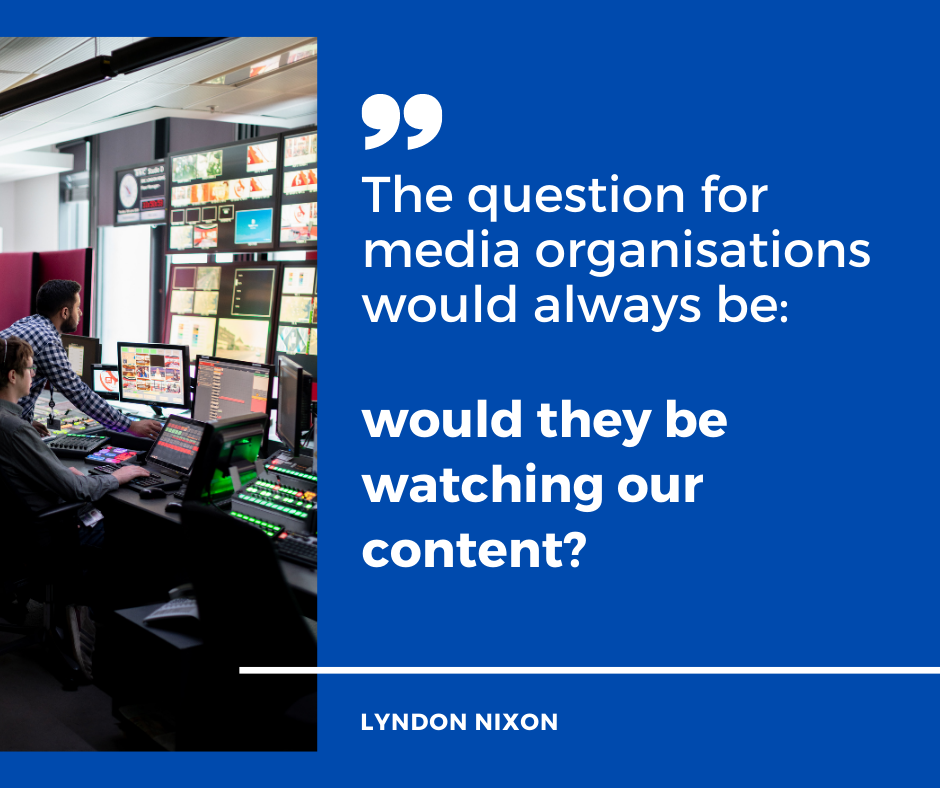- ReTV in 2020: re-imagining television during a pandemic - February 4, 2021
- ReTV Rewind 2019 - February 13, 2020
- ReTV presents first results at EBU MDN 2019 - June 21, 2019
When the ReTV project kicked off in 2018 with the goal to re-imagine television for an interactive age, none of us imagined what the third and final year of the project would bring. With the first global pandemic (since the Spanish flu a century earlier) dominating the events of 2020, not only was our little project affected in the usual ways (no face-to-face meetings, conference talks going online, etc.) but the whole media industry was disrupted in a way nobody could have foreseen. The formerly gradual shift of media consumption from linear/broadcast to non-linear/online has become more of a flood as people stayed home, spent more time in front of connected screens and wanted especially to consume both more news and more entertainment*. The question for media organisations would always be: would they be watching our content? As we come out of this pandemic, ReTV firmly believes that these changes in consumer behaviour will persist and media organisations, especially the traditional broadcasters, will need more than ever our tools for “trans-vector publishing” to ensure that their media assets can be found on digital channels in a form in which the audiences will watch them.

Trans-vector publishing is our vision for future digital content marketing workflows where the same content can be semi-automatically published in different forms on different digital channels at each one’s optimal time, instead of manual workflows for each channel, often even with different teams working with different content to promote. The pandemic did not slow down our progress in completing the technical infrastructure for this, which we call the “Trans-Vector Platform” (TVP). Here, we provide a set of integrated components to analyse the topics of interest among the online audience, use predictive analytics to then predict the trending topics in the future, and use these topics to select relevant media assets and dynamically re-purpose them for publication on the selected channel (e.g. Instagram Stories). Naturally, all of this can be accessed through user-friendly Web interfaces for digital content marketing teams. Our “Content Wizard” provides the end-to-end trans-vector publication workflow with the initial choice of media content possible through selecting a trending topic or from a calendar of future events.

Photo by Sam McGhee on Unsplash
Another change that the pandemic caused was that our project was extended by three months to end in March 2021, and not the end of 2020 as originally planned. This is important as we want to be able to address media organisation needs in the next months as they (hopefully) come out of the disruption of planning that was caused in the year 2020 and begin to consider the permanent adaptations they need to survive in the new, post-pandemic world. This is most definitely going to be a world where their audiences have become accustomed to spending more time online and doing more activities online; a world in which more needs to be done to get their attention and keep audiences engaged. ReTV’s ‘4U2 Messenger‘ explores new ways for media organisers to reach their audiences, in this case with personalised choices of video from their archives sent every day to subscribers in their preferred messenger app.
The last decades have seen several revolutions in how media content is distributed and consumed. From the Web in the 1990’s, through social networking in the 2000’s and smartphones in the 2010’s, we can expect nothing else but further shifts in the 2020’s as other technologies emerge. Trans-vector publishing is another step by which media organisations can adapt to the new form of television where content is transient, malleable and ubiquitous. Join us as we re-imagine television for this new decade!
* Nielsen’s Streaming Meter for 2020 found a 75% increase in cumulative weekly time spent with streaming video compared to one year earlier. Streaming has been adopted particularly by those aged 55+, with Nielsen saying ” now that they are here and entered the streaming realm, that behavior is likely to stay”. Source: Nielsen ‘Total Audience Report’ Q2/2020.
*Front photo by alexandre alex on Unsplash


Comments are closed.